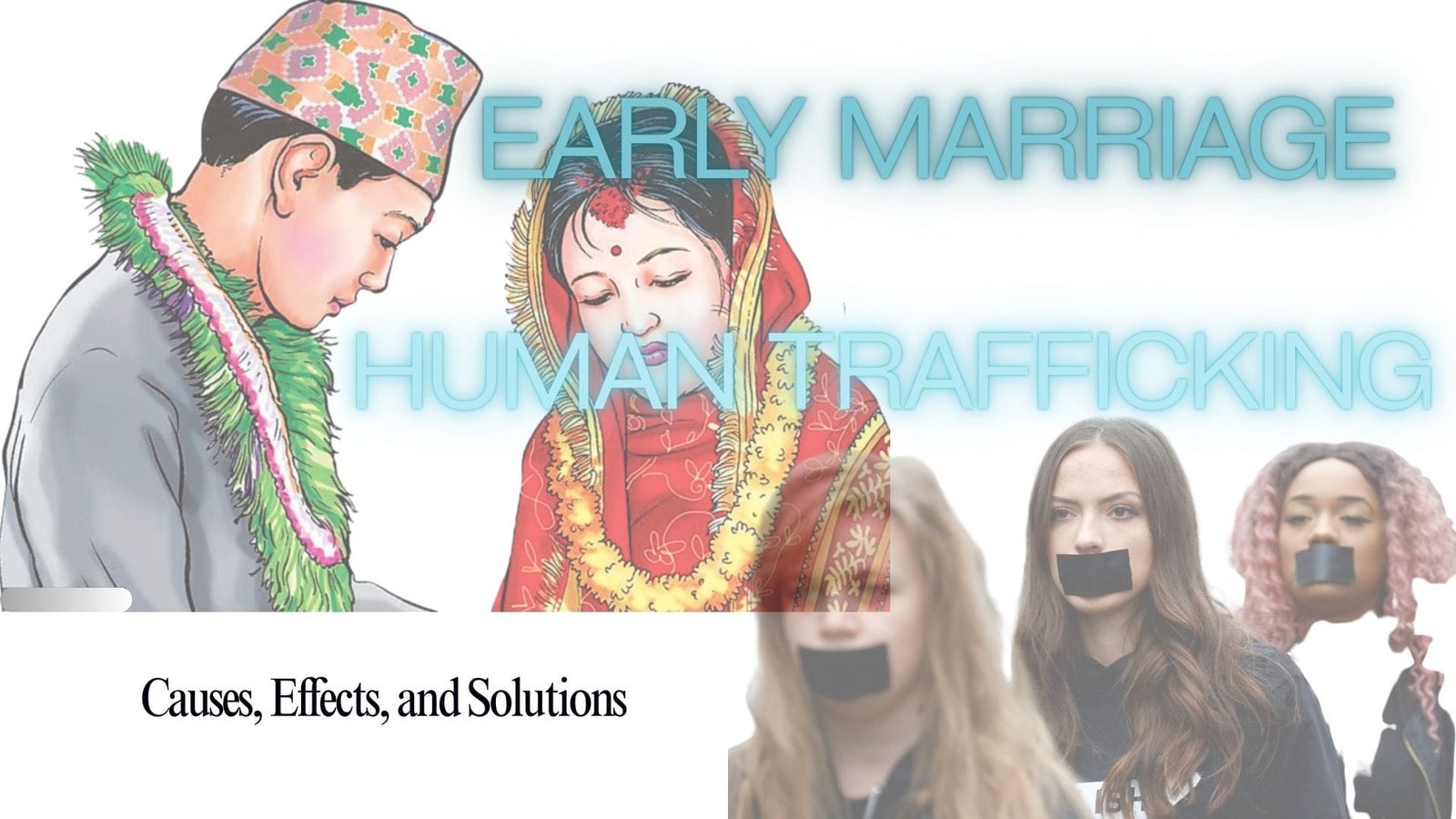Early Marriage
Definition
Early marriage refers to the union of individuals before the age of 20.
Contributing Factors
- Lack of Education:
Limited access to education restricts awareness about the implications of early marriage, perpetuating its prevalence. - Poverty:
Financial constraints may lead families to marry off daughters early, perceiving it as a means to alleviate economic burdens. - Gender Discrimination:
Societal biases often view daughters as burdens, whereas sons are seen as assets, leading to early marriages of girls. - Patriarchal Norms:
Dominant male authority and limited female autonomy contribute to decisions favoring marriage. - Cultural Traditions:
Long-standing customs and familial pressures may encourage early marriages as a continuation of tradition.
Consequences:
- Maternal and Infant Mortality:
Early pregnancies pose health risks due to underdeveloped bodies, leading to higher rates of maternal and infant mortality. - Perpetuation of Poverty:
It often result in larger families with limited resources, exacerbating poverty. - Educational Setbacks:
It frequently interrupts educational pursuits, leading to illiteracy and limited opportunities.(Wikipedia) - Domestic Violence:
Increased vulnerability to domestic abuse due to power imbalances and lack of support systems. - Mental Health Issues:
Young brides may experience psychological distress, including depression and anxiety.
Interventions:
- Educational Empowerment:
Promoting education for girls to provide them with knowledge and opportunities, enabling informed decisions about marriage. - Community Awareness Campaigns:
Organizing initiatives to educate communities about the detrimental effects of early marriage. - Supportive Legislation:
Advocating for laws that protect minors from early marriage and provide avenues for justice. - Economic Assistance:
Providing financial support to impoverished families to reduce the perceived need for early marriages.
🤝 Join Our Community | Contact us ! Your skills and passion can make an impact.
Human Trafficking
Overview
Human trafficking involves the illegal trade of individuals for exploitation, including forced labor and sexual exploitation.
Categories
- Labor Trafficking:
Coercing individuals into work under threat or deceit, often in harsh conditions without fair compensation. - Sex Trafficking:
Exploiting individuals through coercion or deceit for sexual purposes, often involving minors.
Statistics
- Approximately 15,000 Nepali individuals are trafficked annually, with a significant majority being women and girls. (Nepali Sansar)
- The open border between Nepal and India is a known route for trafficking, facilitating the movement of victims. (CESLAM)
Root Causes:
- Educational Deficits:
Lack of education makes individuals more susceptible to trafficking schemes. - Economic Hardship:
Poverty-stricken families may fall prey to traffickers offering false promises of employment. - Physical Vulnerability:
Women and children are often targeted due to perceived physical weakness and lack of protection. - Deceptive Employment Offers:
Traffickers exploit unemployment by offering fictitious job opportunities abroad.
Victim Experiences:
- Loss of Autonomy:
Victims often face restrictions on movement and are controlled by traffickers. - Seizure of Identification Documents:
Passports and IDs are confiscated to prevent escape and maintain control. - Exploitation and Abuse:
Victims endure forced labor, sexual exploitation, and physical abuse.
Preventive Measures:
- Educational Initiatives:
Implementing programs to educate communities about the risks and signs of trafficking. - Economic Empowerment:
Providing financial opportunities to reduce vulnerability to traffickers. - Community Vigilance:
Encouraging communities to monitor and report suspicious activities. - Child Supervision:
Ensuring children are supervised and educated about potential threats. - Emergency Preparedness:
Promoting the use of emergency contact information and encouraging individuals to report suspicious activities.
🤝 Join Our Community | Contact us ! Your skills and passion can make an impact.
Conclusion
Addressing early marriage and human trafficking requires a multifaceted approach involving education, economic development, legal reforms, and community engagement. By tackling the root causes and implementing preventive measures, societies can protect vulnerable individuals and promote human rights and dignity.





